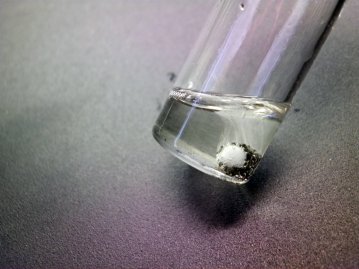In a research funded by the US Department of Energy, four scientists from the University of Oregon have developed a material to store hydrogen, using boron-nitrogen-based liquid-phase.
 Hydrogen releases in the presence of iron chloride
Hydrogen releases in the presence of iron chloride
This new material has displayed stability in both air and moisture. To be more specific, the research team developed a platform based on cyclic amine borane, which is also called BN-methylcyclopentane. Apart from being stable, the platform displayed the ability to retain hydrogen without changing phase. For the purpose of hydrogen desorption, the platform used iron chloride which enabled the conversion of the used fuel into the charged state.
This is a welcome change from the current storage materials which are solid, as liquid materials allow for a smooth transition from gasoline phase to hydrogen phase. During the course of the study, the researchers initially discovered six cyclic amine borane materials that were membered. On the release of hydrogen, these materials produced a large molecule. Although these materials were in their solid state, scientists altered the structure of the materials to convert them into liquid forms. The materials that were changed into liquid form in such a manner had low vapour pressure and retained their liquid form even upon the release of hydrogen.
Scientists believe that the new platform could be applicable in devices that use fuel cells. However, they also believe that the greatest hurdle in the commercial usage of such a platform would be the increase of hydrogen yield and the development of an effective mechanism to regenerate. The US Department of Energy is encouraging research to develop a solid or liquid hydrogen fuel carrier by 2017.